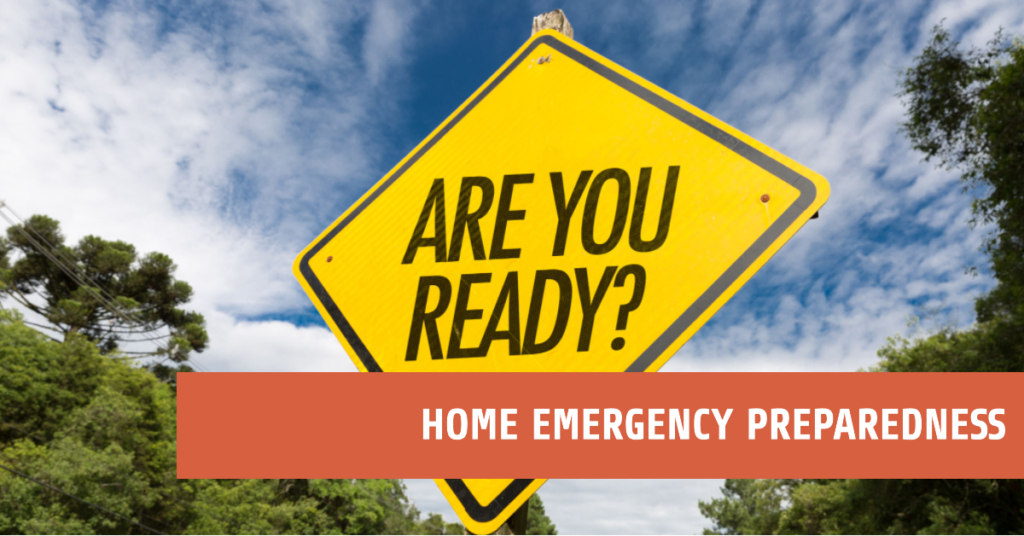
Emergencies are unpredictable, and home emergency preparedness is crucial. From natural disasters to civil unrest, numerous scenarios can disrupt daily life and put your family’s safety at risk. Being proactive and ready for the unexpected ensures your family’s well-being and increases your chances of successfully navigating emergencies.
Creating an Emergency Plan
Identifying and Assessing Potential Risks
Understanding the risks specific to your area is the first step in creating an emergency plan. Investigate the most common hazards, such as earthquakes, floods, or hurricanes, and consider any unique factors that may affect your community. This information will help you better prepare for potential emergencies.
Establishing a Family Communication Plan
During emergencies, communication lines may be disrupted, making it difficult to reach family members. Develop a communication plan that includes multiple methods of contact, such as cell phones, landlines, and social media. Designate an out-of-town contact who can relay messages between family members if local communication is disrupted.
Designating Emergency Meeting Points
Identify safe locations both inside and outside your home where your family can gather during an emergency. Select a meeting point in your neighborhood and another outside your immediate area in case evacuation is necessary. Make sure all family members know the locations and how to get there.
Practicing Emergency Drills
Familiarize your family with emergency procedures by conducting drills regularly. Practice evacuating your home, meeting at designated locations, and using different communication methods. Rehearsing these actions will help your family respond more effectively during a real emergency.
Stocking Up on Essential Supplies
Creating a Comprehensive Emergency Supply List
An essential part of emergency preparedness is having a well-stocked supply of necessary items. Compile a list that includes food, water, medical supplies, power solutions, and communication tools. Regularly review and update this list to ensure you have everything required to face various emergency situations.
Food and Water Storage
During emergencies, access to food and water might be limited. Store a minimum of a 72-hour supply of non-perishable food items and one gallon of water per person per day. Choose foods that require minimal preparation and have a long shelf life. Rotate your stock regularly to maintain freshness.
Medical Supplies and First-Aid Kits
Injuries are common during emergencies, making first-aid kits and medical supplies crucial. Include items such as adhesive bandages, gauze, pain relievers, antiseptic wipes, and any prescription medications required by family members. Regularly check the expiration dates and replenish supplies as needed.
Power and Lighting Solutions
Power outages are a common consequence of emergencies. Prepare by stocking up on alternative power sources, such as batteries, solar chargers, and portable generators. Have multiple lighting options available, including flashlights, lanterns, and headlamps. Check and maintain these devices to ensure they are functional when needed.
Communication and Navigation Tools
Staying informed and connected during emergencies is essential. Invest in a battery-powered or hand-crank radio to receive updates from local authorities. Consider purchasing walkie-talkies for short-range communication with family members. Keep maps of your area and a compass on hand in case electronic navigation systems become unavailable.
Home Safety and Security Measures
Fire Safety Equipment
Equip your home with essential fire safety equipment, such as smoke detectors and fire extinguishers. Install smoke detectors on every level of your home and test them monthly. Keep fire extinguishers readily accessible and ensure everyone in your household knows how to use them.
Securing Doors and Windows
Secure all entry points to your home to deter intruders. Install deadbolt locks on exterior doors and use security bars or window locks for added protection. Consider investing in a home security system or surveillance cameras for peace of mind.
Reinforcing Your Home’s Structure
Strengthen your home’s structural integrity to withstand natural disasters. Reinforce your roof with hurricane clips, brace walls and ceilings, and secure large appliances and furniture. Consult with a professional contractor to assess your home’s vulnerabilities and develop a plan to address them.
Utility Shut-Off Procedures
Learn how to safely shut off utilities such as electricity, gas, and water in case of emergencies. Familiarize yourself with the location of shut-off valves and switches and educate your family members. Keep necessary tools, like a wrench or pliers, easily accessible to facilitate quick shut-off when needed.
Home Defense Strategies
Develop home defense strategies to protect your family during emergencies. These may include setting up a safe room, installing a security system, or having self-defense items on hand. Communication and coordination within your household are critical for ensuring everyone’s safety.
Preparing for Specific Emergencies
Earthquakes
During an earthquake, take cover under a sturdy table or desk, away from windows and heavy objects. Practice “Drop, Cover, and Hold On” drills regularly. After the shaking stops, assess your surroundings and exit the building if it’s unsafe. Have an earthquake emergency kit with essential items and develop a family communication plan.
Floods
Be informed about local flood risks and have an evacuation plan. Elevate appliances and utilities above potential flood levels. Keep sandbags and other flood barriers on hand. For more information on flood preparedness, visit Flood Preparedness: Stay Safe & Informed.
Hurricanes and Tornadoes
Monitor weather updates and heed evacuation orders. Create a safe room or identify a small, windowless, interior room as a shelter. Secure outdoor furniture and objects, and reinforce doors and windows. Learn more about how to prepare and survive a tornado.
Wildfires
Create a defensible space around your home by clearing flammable materials. Have a plan for evacuating your family and pets. Keep emergency supplies in your vehicle and maintain a go bag for each family member. Stay informed about local fire conditions and follow evacuation orders promptly.
Civil Unrest
Stay informed about local news and avoid areas with ongoing protests or demonstrations. Create a safe room in your home, and have an evacuation plan if necessary. Keep self-defense and security items on hand, and maintain open lines of communication with family and neighbors.
Special Considerations for Family Members and Pets
Caring for Infants, Elderly, and Individuals with Disabilities
Tailor your emergency plan to accommodate the unique needs of infants, elderly, and disabled individuals. Consider their dietary requirements, medication, and medical equipment. Have a list of their doctors and care providers, and establish a support network for assistance during emergencies.
Pet Preparedness and Evacuation Plans
Include pets in your emergency plans. Prepare a pet go bag with essentials like food, water, and medications. Keep their vaccinations and identification up-to-date, and have a list of pet-friendly shelters or accommodations.
Storing Essential Documents and Personal Items
Store important documents like birth certificates, passports, and insurance policies in waterproof containers. Keep digital copies stored securely on a USB drive or in the cloud. Include personal items, such as family photos and heirlooms, in your emergency kits.
Conclusion
Home emergency preparedness can save lives and minimize damage during disasters. Taking the time to plan, gather supplies, and practice your response is crucial for the well-being of your family and pets.
Stay informed about potential risks and hazards in your area. Continuously update your plans and supplies, and participate in community emergency preparedness events.
In an emergency, every second counts. Being prepared can make all the difference, helping you act quickly and decisively. Don’t wait until it’s too late – start your preparations today. To ensure you have everything you need in an emergency, visit go bag essentials for a comprehensive guide on creating a go bag for you and your loved ones.
